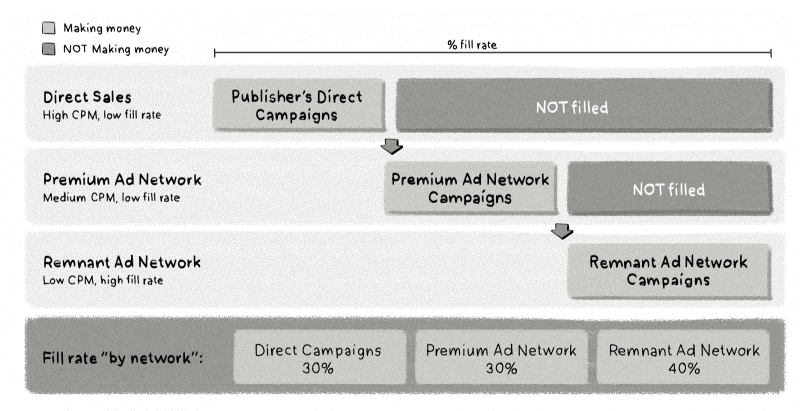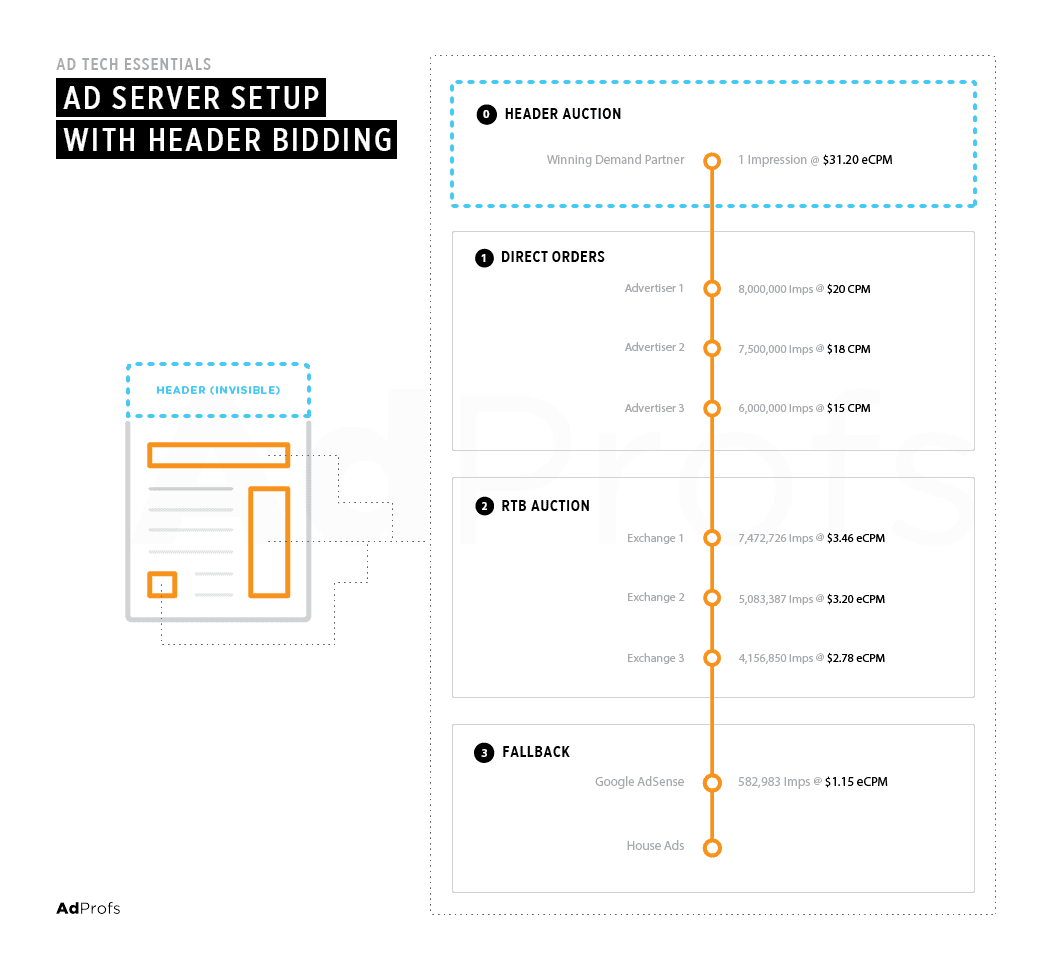Everything you need to know to maximize the revenue of your digital inventory
It used to be that advertising meant newspaper ads and flyers. In today’s digital world, advertising has reached new levels.
Advertising has evolved into a global marketplace and now requires many relationships that extend further than the typical publisher/advertiser bond we’ve all become familiar with.
But no matter how complicated and complex this global industry may become, the relationships between publisher and advertiser (and everyone in between) are crucial in keeping up with changing practices.
Advertising relationships before the digital age
During most of the 20th century, there were only two sides to an advertising transaction: the publisher and the advertiser. A newspaper, for example, was produced by a publisher and had an audience that read its content daily. An advertiser would pay the publisher an agreed amount of money to put their content in front of that audience.
As a result, publishers had a new source of income that allowed them to discount subscriptions or give out their product for free to build a larger reader base. This process has been used in television and radio commercials and now it’s used in the online advertisements you see each day on different websites and social media platforms.
Within the last century, advertising has made significant adjustments to accommodate new technologies and, as a result, the process of advertising has become much more complex.
Digital advertising changes the game
In the past, advertisers couldn’t accurately measure how their newspaper ads were performing. Additionally, the information accessible for television and radio didn’t come close to the digital analytics we have today.
With the current information available, advertisers accurately measure the ad’s effectiveness and performance, which gives them the opportunity to reach prospective customers in an affordable manner.
This, unfortunately, has a negative effect on the publisher.
Publishers looking to sell available ad inventory are impacted by the abundance of information advertisers have at their fingertips. With analytics, advertisers determine how to respond to ad performances, which could mean a decrease in the demand for publisher ad slots, particularly if ads aren’t performing as expected.
Ad networks – digital advertising’s middleman
The number of advertising opportunities available online is nearly infinite with some targeting a general popular and others specializing in niche audiences. Most advertisers want to reach several target audiences and thus, need several different advertising opportunities. Managing these different opportunities, ensuring content is accurate, it runs, and paying each partner could be a huge amount of work.
This is where ad networks come in.
Ad networks are companies that take on multiple advertisers, also known as buyers, and direct them to publishers that have ad inventory that correlates with their content. They facilitate several activities on both ends of the transaction including keeping track of available ad inventory and negotiating the costs. As a publisher, partnering with several ad networks will expand the number of buyers your inventory is open to – creating more competition for your ad slots.

If you are an advertiser, working with an ad network opens up the line of communication needed to contact the publishers you strive to work with.
Ad networks strive to maintain transparency and trustworthiness with publishers and advertisers. New technologies, built by ad network companies like PulsePoint and OpenX, allow for better tracking and impression reporting.
Choosing the right ad network partners is crucial for publishers’ success. Transparency, correct reporting, international payment regulations and on-time payments are all concerns for publishers selling their inventory into ad networks. It’s not that ad networks are maliciously neglecting any of these areas but things can fall through the cracks when they are managing thousands of publisher accounts on their platform.
When it comes to payments, ad networks need to have their processes streamlined to keep publishers happy and relationships long term. This is where automating accounts payable through accounting software like Quickbooks can facilitate on-time and early payments to publishers on behalf of these ad networks to continue to build trust and positive relationships.
Ad exchanges cater to a massive market
Ad exchanges are online platforms where the transaction between the publisher and advertiser takes place – with the assistance of the ad network that connected the two together.
When on ad exchange websites, advertisers bid against their competition for inventory in real-time.

Purchasing ad inventory has evolved into a bidding transaction since the industry went online. With the number of options and buyers available at one time, bidding is the best way to sell ad inventory for what it’s worth at that moment.
Demand-side and supply-side platforms
Not only are ad networks available to streamline the advertising process, but both publishers and advertisers have their own facilitators as well.
Advertisers have Demand-Side Platforms (DSP) that help them build relationships with ad networks and exchanges, increasing their chances of finding the right publishers for their content.
On the other hand, Supply-Side Platforms (SSP) help publishers push ad inventory on ad exchanges and are a huge help for publishers who receive millions of impressions each day.
Bottom line, the facilitators (ad networks/exchanges) also need their own facilitators (DSPs and SSPs).
The larger this industry becomes – the more relationships are needed to keep things running smoothly.
The foundation of digital advertising
At the end of the day, the relationship between publishers and advertisers is what matters most. The advertising marketplace continues to grow online, making it necessary to create more roles to keep both publishers and advertisers connected.
It may seem more difficult the larger this industry gets, but digital advertising continues to move forward. Through all the automated processes, online platforms and facilitators, publishers and advertisers are able to stay connected.
Fortunately, everyone in this industry now has the chance to connect with anyone.
This market is only getting bigger and it will take more to succeed. All of these relationships are vital, so no matter how small of a role one may have, it’s crucial to the end result.
While this industry can be hard to understand, the ecosystem of digital marketing is intricate and worth all its while.